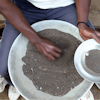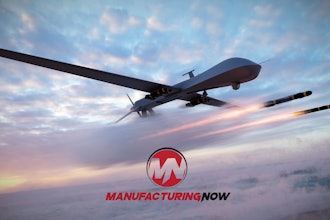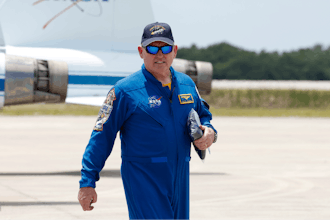By PAMELA KAN, President, Bishop-Wisecarver Corp.
I first learned about the FIRST program while traveling with one of my salesmen. We called on several companies where somewhere within the course of the meeting, one of the engineers would reveal their involvement as a mentor in a group called FIRST. I realize now that these mentors during the time of the competition are extremely dedicated, and devote many hours to their teams and probably think of little else.
The concept intrigued me for several reasons. First, my father Bud Wisecarver has always been a huge supporter of school programs, and has been actively involved with local school and community colleges since 1957 in the Bay Area. Second, from a business sense, it was another way to reach my customer target market of design and mechanical engineers.
So I did some research to find out more about what FIRST was really all about. FIRST is devoted to helping young people discover and develop a passion for science, engineering, technology and math. Founded nearly 20 years ago by inventor Dean Kamen, the annual programs culminate in an international robotics competition and celebration where teams win recognition, gain self confidence, develop people and life skills, make new friends, and perhaps discover an unforeseen career path.
FIRST currently has four levels of competition starting off with Junior FIRST Lego League (grades K through 3), FIRST Lego League (Grades 4 through 8), FIRST Tech Challenge (high school) and FIRST Robotics Competition (high school). I liked the values and goals being expressed and what the group was promoting, and decided to get my company involved.
We first became a supplier for the FIRST Robotics Competition in 2007. As a supplier, we put together a kit of our DualVee parts (four wheels, four bushings and two pieces of track) for each team. Each team has a kit of parts that lives with the team as long as it functions. Parts supplied one year and not used can be used in future years. That is partly what makes the FIRST competitions so great: Kids can be a part of the same team for the entire high school experience. Each school year, teams are formed in the fall.
The FIRST Robotics Competition Kickoff in early January starts the six-week "build" season. The robots are designed and built within the first six weeks (from of a common set of parts) by a team of 15 to 25 high-school-aged young people and a handful of engineer mentors. The students remotely control the robots in competition rounds on the field.
Competitions take place in March and April. The FIRST Robotics Competition Regional events are typically held in university arenas. They involve 40 to 70 teams cheered on by thousands of fans over two and a half days. A championship event caps the season. Referees oversee the competition. Judges evaluate teams and present awards for design, technology, sportsmanship and commitment to FIRST.
The Chairman’s Award is FIRST’s highest honor and recognizes a team that exemplifies the values of FIRST. For the past several years, they have been held in Atlanta at the Georgia Dome. My company further supports the FRC teams by providing linear guides and actuators at a deeply reduced cost. All FRC teams have to raise the money required to support teams, build the robots and compete. It is a very intense four-month cycle. The FIRST® Robotics Competition (FRC®) stages short games played by autonomous and remote-controlled robots.
If you want to see the future leaders of our country in action, then head to the FIRST finals. It is an experience that is hard to actually put into words. To see an arena full of kids cheering each other on and having a great time building something, using their minds to solve problems and learning how to operate within a team is mind blowing. The energy generated by these kids could power a city if it was possible to harness it all.
As a supplier, you are able to have a table at the championship event to talk about your products and services with the students. It is really surprising the technical questions these kids can ask. As a woman, I love the surprise and excitement that is generated when the girls realize that I am the president of the company. Several have made comments they just never thought that a woman could own or run a manufacturing or engineering business. For me, this is extremely rewarding to see these girls all of a sudden realize that they have more options for their careers.
2010 marks the 19th season for FIRST robotics. The game is entitled BREAKAWAY™. The specifications for the robot they are building is that it can be a maximum weight of 120 pounds (not including the battery and bumper) with a footprint of 28 (W) by 38 (L) by 60 inches (H).
All robots are powered by a 12-volt battery. The robots operate on a playing field that is 27 (W) by 54 (L) feet. There are 1,809 teams, of which 1,534 are veteran teams (91 percent retention) and 275 are rookie teams. This equates to a total of 45,225 students (an average of 25 per team) and 25,326 mentors/adult supporters (an average of 14 per team), plus 6,600 other volunteers. Forty-eight states, four provinces and 12 countries are participating.
This year, my company sponsored two FRC Robotic teams, as well as one FIRST Tech Challenge team. We also continued our support as a supplier to the kit of parts. We had a great time interacting with these teams. We decided to record each team’s progress via video. You can watch these at our YouTube channel (www.youtube.com/bishopwisecarver). We chronicled their progress from building the robot to their progress through the San Jose State and UC Davis regional competitions. One of the teams even made it to the finals round at both regional events.
In reviewing one of our videos, I was clearly reminded of the impact that FIRST has on these students. One student states “There’s a lot of stuff I don’t know. But I think it is fun to learn new things. In the future, I want to go to school to become an engineer. So I joined FIRST robotics.”
I can guarantee you this is probably a student that would have never thought of himself as an engineer prior to his exposure with FIRST. He also now has access to scholarship money because of his participation in the FRC. This year $12.2 million will be available from 136 scholarship providers.
So that is really why I am so passionate about supporting FIRST. Our country needs to have kids that are as excited about science, technology, engineering and math (STEM) as they are about their sports heroes or music idols.
Our country is great because of our ability to innovate and manufacture great ideas and products. We have to support programs that get students to see the possibilities that STEM provides. As a country, we need to celebrate and honor our great STEM minds more than we do our sports and music idols.
Our kids need to believe that they can be great critical thinkers, that STEM is cool, and that STEM is vitality important to the future of our country. All supporters of FIRST get this, and while several supporters may be my competitors, in this arena, it doesn’t matter because we are all rooting for the same team.
For more information, please visit www.bwc.com.






















